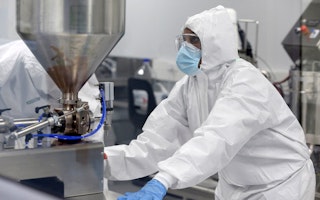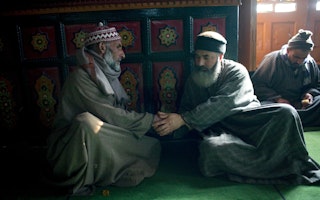New and Improved? Examining the Global Fund’s New Funding Model
By Krista Lauer
At a Crossroads
Since its inception in 2002, The Global Fund to Fight AIDS, TB, and Malaria has allocated billions of dollars to combat the spread of HIV, tuberculosis, and malaria. It set itself apart with a bottom-up, “demand-driven” approach: applicant countries develop their grant proposals at a local level, and submit them to the Fund for approval. The Global Fund’s efforts to include marginalized communities in decision-making processes have made it one of the most progressive health funding mechanisms in the world.
But, the Global Fund as we once knew it has changed. After allegations that recipient countries misused donor funds and the global recession led to decreased contributions from donor countries, the Fund was forced to suspend new investments in 2011. With the Fund’s survival uncertain, a year-long transition process took place to conceptualize a new and improved funding model to restore donor confidence.
In November of 2012, the Global Fund officially adopted a new funding model, premised on the goal to “invest more strategically.” This new approach changes the way countries apply for funding, obtain approval of their proposals, and manage their grants. And it presents an opportunity for the Fund to scale up its commitment to promote and protect human rights.
One of the biggest changes under the new model is predictable and flexible funding. In the past, applicant countries could create a proposal for any amount of funding—they could virtually shoot for the stars—but if their proposal was technically unsound, the entire application could be refused. Under the new model, the Fund will indicate to each country the total amount of money they can expect at the outset of the proposal process, with an opportunity to get more support through an additional “incentive” funding pool. Countries may apply for funding at any time, freed from the previous structure of having to apply at only very specific points during the year.
The new model demands broader participation by stakeholders, including government agencies, donors, civil society, and affected communities. Toward this end, the Fund has developed a process called a “country dialogue,” out of which stakeholders draft a summary of their proposed work plan, allowing the Fund to work more closely with countries to develop their detailed proposals much earlier in the process. And new budget requirements ask countries to explicitly state how they will spend grants, and which programs and interventions will be prioritized. This transparency offers civil society critical information with which to hold the Fund and its recipients to account.
In February of this year, the Fund announced the first six countries to test the new model—Zimbabwe, El Salvador, Myanmar, the Democratic Republic of the Congo, Kazakhstan, and the Philippines.
From Paper to Practice
Although the new model is intended to promote and protect human rights and enable participation from affected communities, old challenges could persist, and new ones may emerge.
An important measure of the new funding model’s success is the extent to which it fosters increased participation by civil society and marginalized communities at each of the key stages. We know that stigma isn’t left at the door when marginalized groups enter the public sphere. For example, drug users who engage in criminal behavior may still find it difficult to take part in the proposal development process, even if they are invited to the table. Many governments will not willingly include effective, but politically controversial, HIV-prevention programs in their proposals, such as clean needle exchange for people who inject drugs. And while the Fund will dictate guidelines to countries about how much they should spend on HIV, TB, and malaria, there is no certainty that they will set aside specific funds for human rights programming or strengthening community systems.
In addition, the new emphasis on disease impact and financial need may mean decreased support to middle-income countries with HIV and TB epidemics that are concentrated among marginalized or criminalized communities. And if countries know the limit of funds available to them, they may offer less ambitious proposals, or look to scrap human rights programming.
Civil society and affected communities will need to ensure that this is not the case. This function is not a new one. The voices of civil society, including those most affected by the diseases, have been the conscience of the Fund since its inception. Indeed, they are at the heart of why it exists and why its wellbeing matters.
Rapid Assessment
The Open Society Foundations is concerned with how this new model impacts community-level engagement in decision-making, and whether programs for criminalized groups and human rights are included in final proposals. We are conducting a rapid assessment of local civil society and community participation in the new model in three early applicant countries: El Salvador, Myanmar, and Zimbabwe. This assessment will investigate how local civil society and communities—especially those from vulnerable populations—are included in the process, and what kind of support is secured for strengthening community systems and human rights work.
The findings may help civil society and local communities remain involved, protect their voices, and ensure their continued role as the conscience of the Global Fund.
Until June 2016, Krista Lauer was the director of the Global Health Financing Initiative of the Open Society Foundations.

